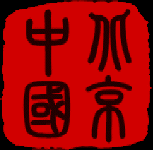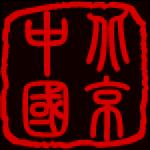 | YuanMingYuan Park |  |
 | YuanMingYuan Park |  |
|
Introduction to YuanMingYuan Park YuanMingYuan, also known as the 'Old Summer Palace' and originally called the Imperial Gardens, was an extremely large complex of palaces and gardens 8 km (5 miles) northwest of the old city wall of Beijing (that is, about 8km from XiZhiMen subway station). YuanMingYuan is very close to the Summer Palace; in fact, slightly nearer to central Beijing. There is now a subway station here (YuanMingYuan Park, line 4). YuanMingYuan was constructed during the 18th and early 19th century and was a wonderland of lakes and waterways, bridges, hills and pavilions. One-third of the ground of YuanMingYuan was taken up by over 200 small hills with steep sides, secluded valleys, rock walls and stone caves. Half of the garderns are covered by the waters of lakes, winding streams and ponds. It was at YuanMingYuan that the emperors of the Qing Dynasty resided and handled government affairs - until it was destroyed; the Forbidden City was mostly used only for formal ceremonies at this time. The southern part of YuanMingYuan was where emperors handled state affairs, while the other parts were primarily for personal use and composed of more than 150 scenic spots, involving rare exotic flowers and trees from different parts of the country. There were originally towers, terraces, pavilions, halls, corridors, pagodas and bridges with a total construction area of 150,000 square meters, corresponding to that of the Imperial Palace. Artisans were recruited from all over China to enact the exquisite settings. The various styles of architecture, standing encircled by hills and rivulets, presented a most picturesque view. Of the eventual total of 160 scenic attractions, many were reproductions of scenic mountains, rivers and famous gardens in China (mostly southern China). During his many tours of the country, Emperor QianLong made it a point to have pictures of famous gardens and scenes drawn so that he could have replicas built in Beijing. Most famous of these were the ten scenic spots of the West Lake in HangZhou. The Old Summer Palace is often associated with the European-style palaces (Xi Yang Lou) that were built of stone. The designers of those structures, the Jesuits Giuseppe Castiglione and Michel Benoist, were employed by Emperor QianLong to satisfy his taste for exotic buildings and objects. However, more than 95% of the Imperial Gardens consisted of essentially Chinese-style buildings. There were also a few buildings in Tibetan and Mongolian styles, reflecting the diversity of the Qing empire. In addition, hundreds of invaluable Chinese art masterpieces and antiquities were stored in the halls, including some unique copies of literary works and collections. YuanMingYuan was, indeed, a veritable museum of garden construction and horticulture. Known to be one of the largest museums in the world, a popular name in China was the 'Garden of Gardens'. Close to the ruins of the western style palaces is the museum. It elaborates the history of YuanMingYuan and its future restoration. Also inside is a copy of a letter written in 1861 by Victor Hugo condemning the destruction by the invading Anglo-French troops as barbaric. Close to the main south gate entrance (on the right / east side) is a new Information Center at which you will find many interesting resources and can purchase a large map of the original gardens showing all the buildings and bridges that once existed here. The main gate to the park is the south gate; this gate is also the nearest to central Beijing and the easiest to get to. There is another gate ('east gate') near to the ruins of the western-style palaces. Videos of YuanMingYuan Park |
Share this page
|








China Travel and Culture Videos Home